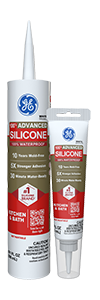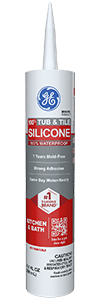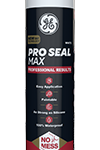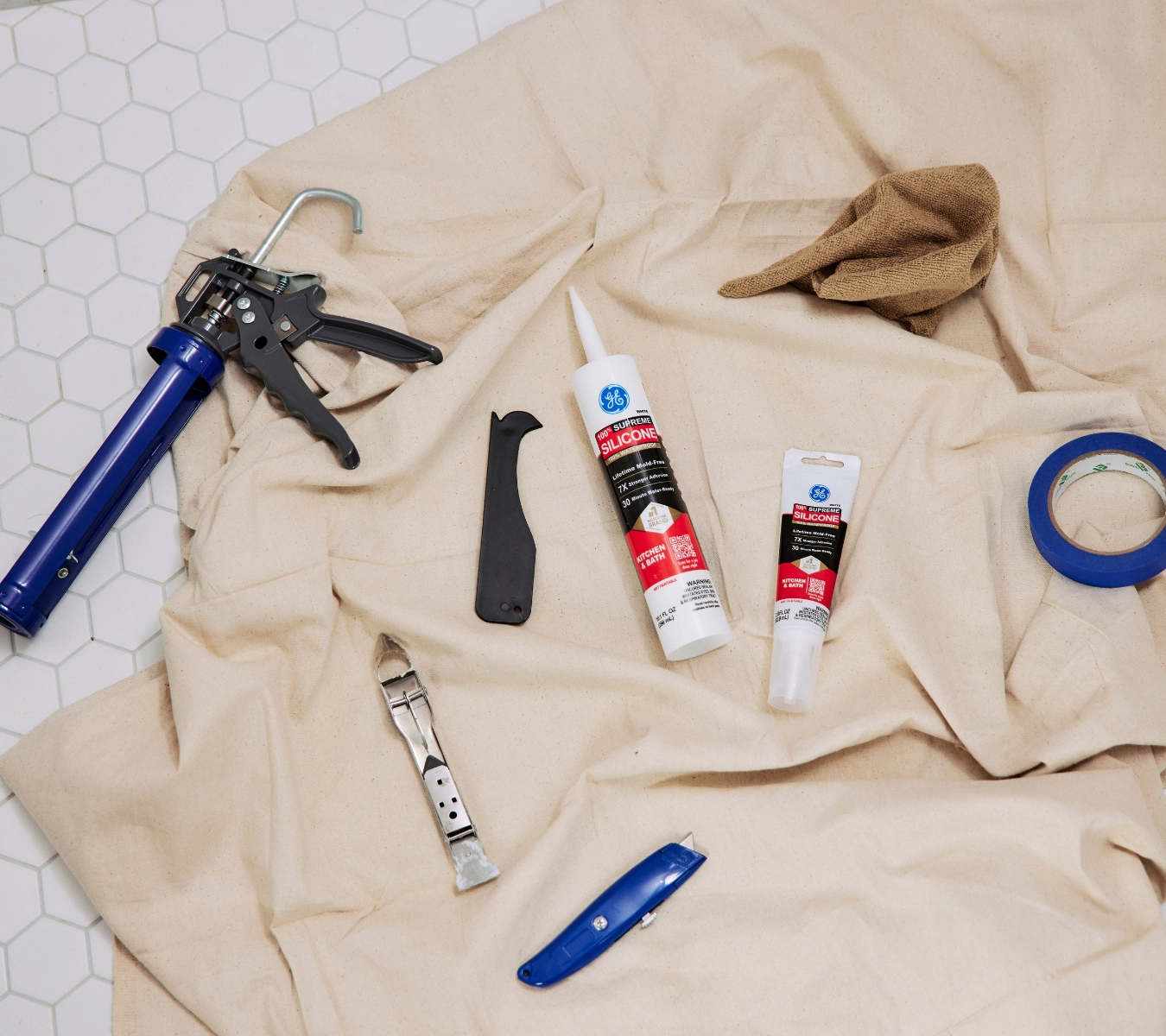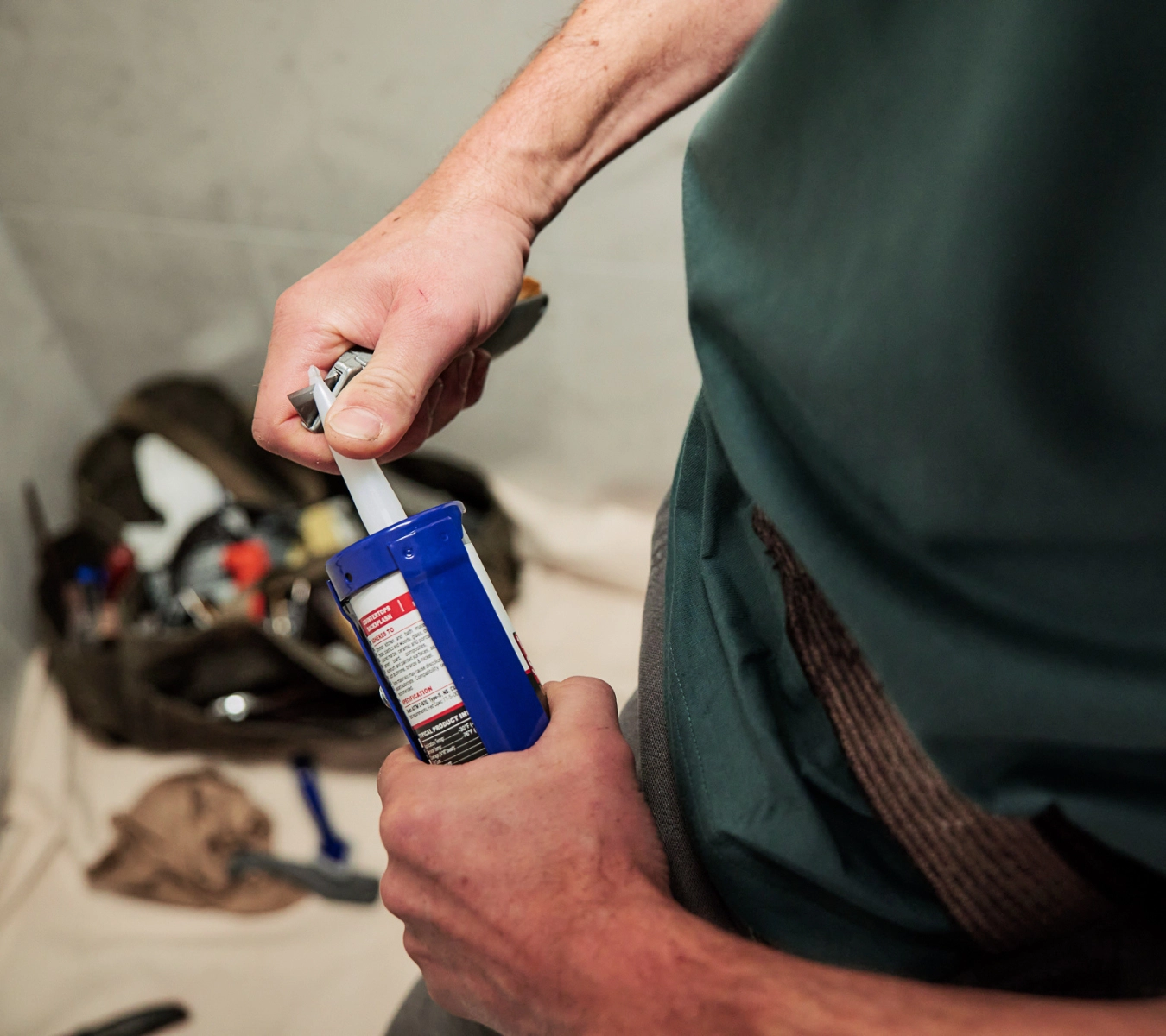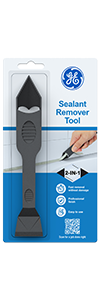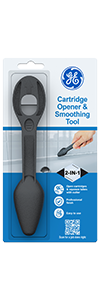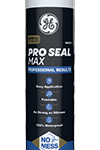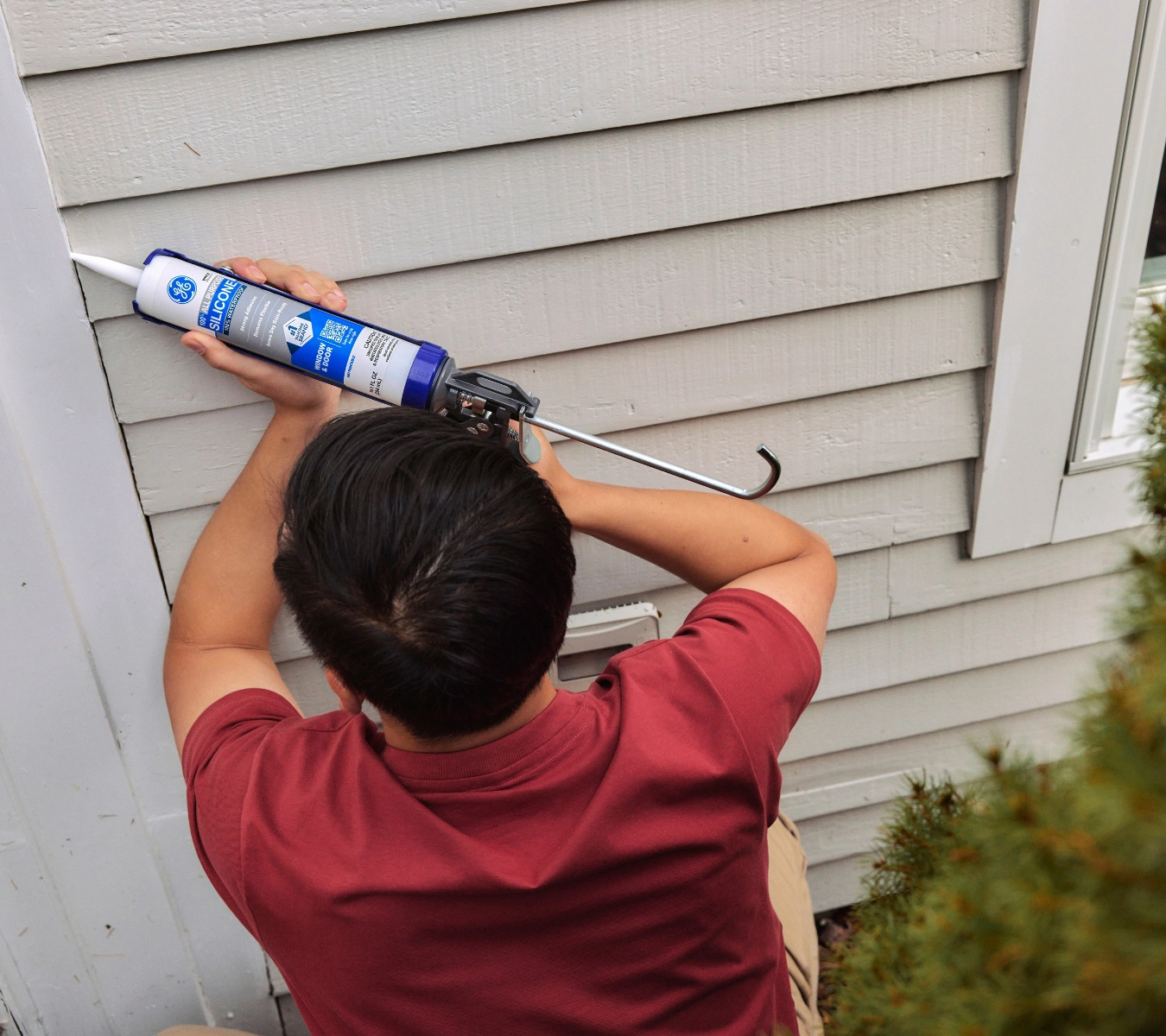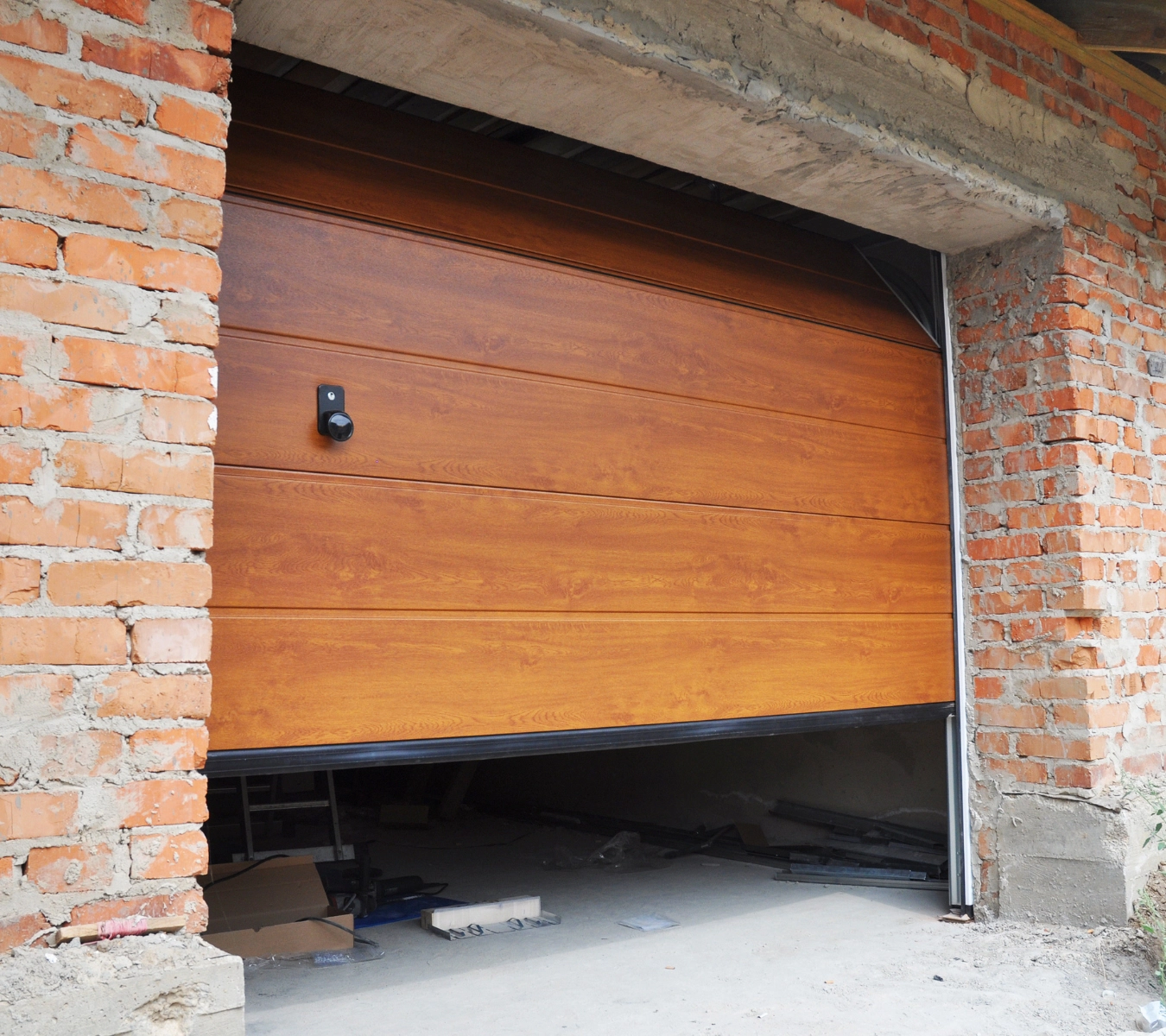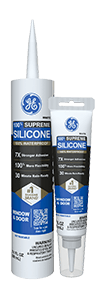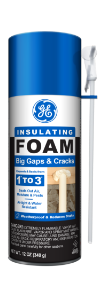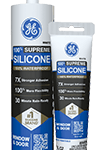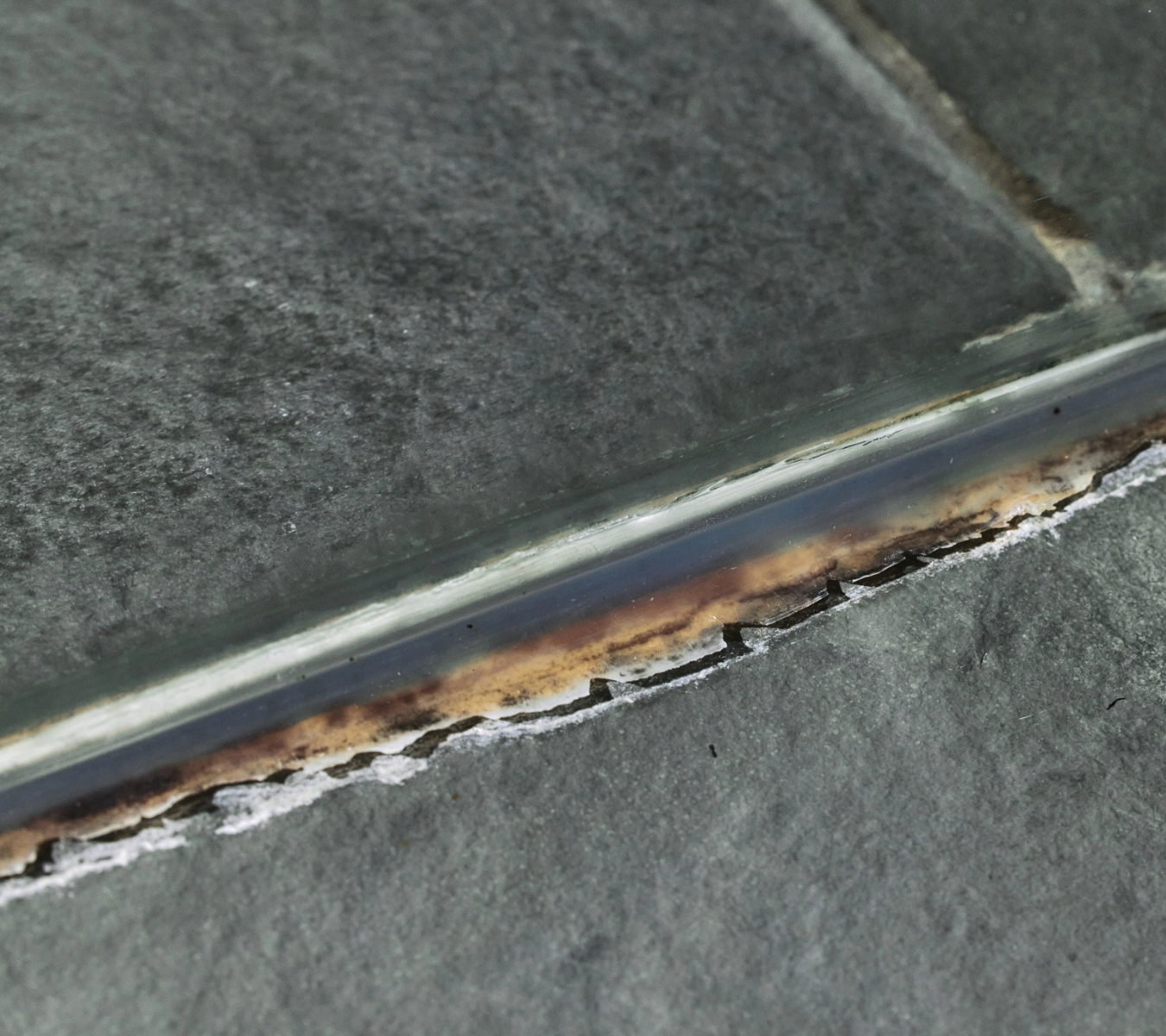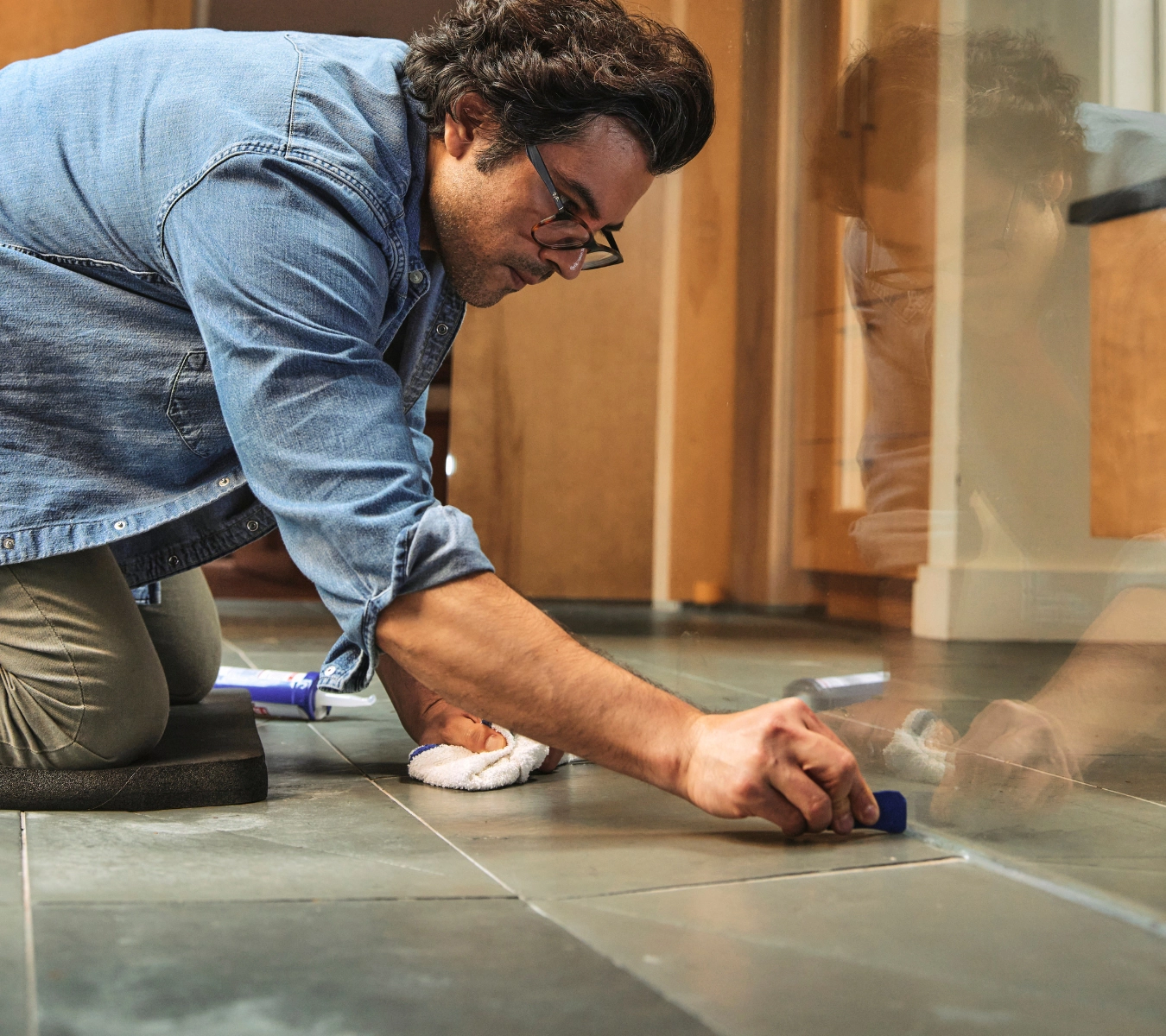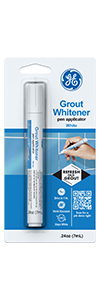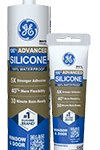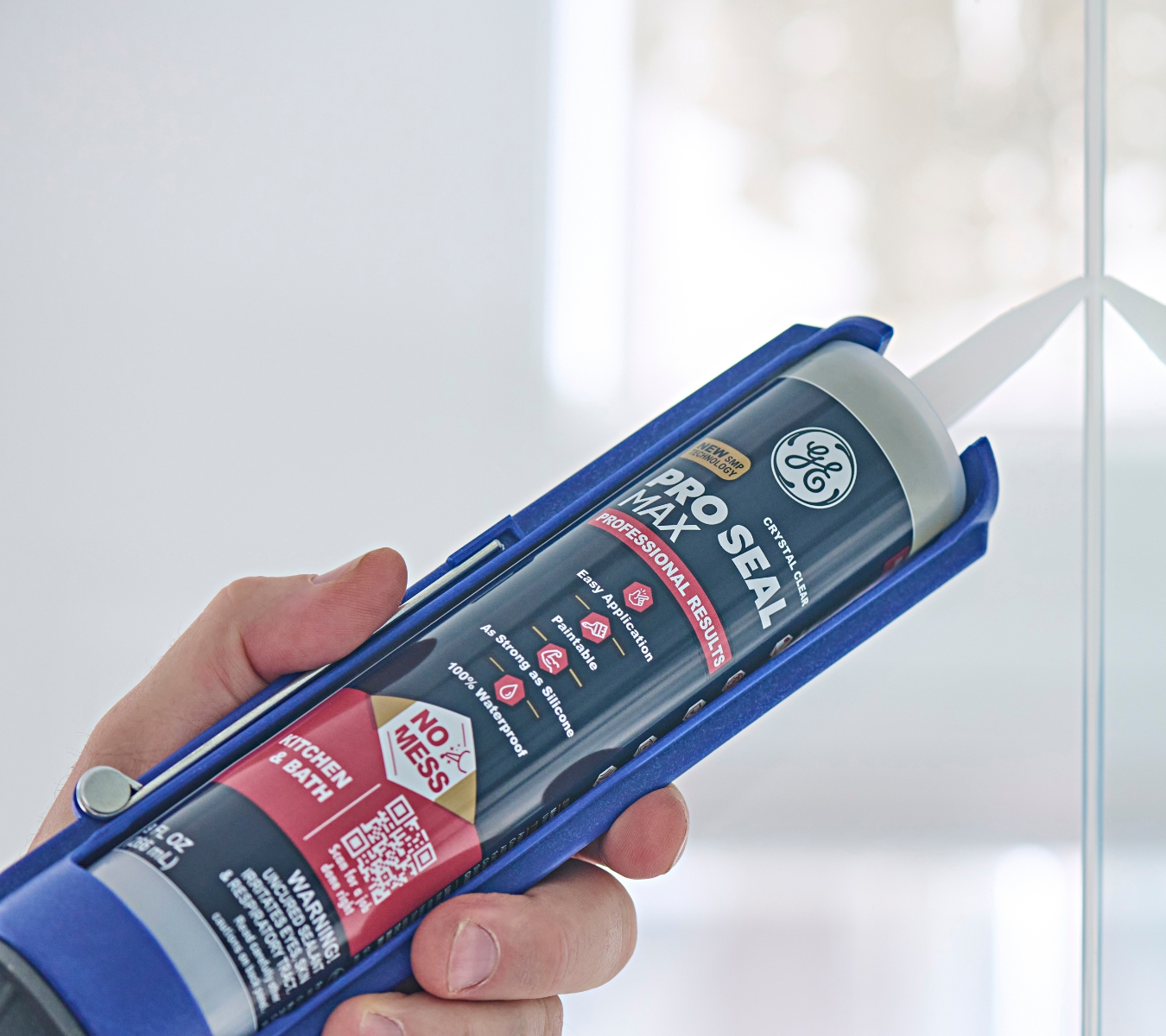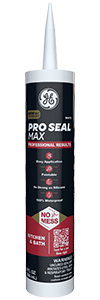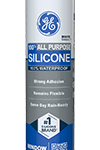Choosing the right plumbing sealant will do more than just help you stop leaks—it will also deliver reliable, professional work that holds up over time. From dry time to long-term durability, the sealant you use can impact everything from job efficiency to customer satisfaction. This guide covers what to look for in a plumbing silicone sealant and why quality matters on every project.
Look for silicone plumbing sealants that offer long-term flexibility, mold resistance, and multi-surface adhesion. Products like GE Advanced Silicone Kitchen & Bath and GE Supreme Silicone Kitchen & Bath Sealant are designed to perform under pressure—literally—helping pros deliver leak-free, customer-approved results.
What to look for in a plumbing sealant for leaks
Here are some key features to look for in plumbing sealants:
- Dry time When time is tight, dry time can make or break your workflow. A plumbing sealant’s cure rate affects how quickly you can move to the next step—whether that’s testing for leaks, reinstalling fixtures, or completing the job altogether. Fast-drying sealants are ideal for quick-turn projects or emergency repairs, while slower-curing options may give you more flexibility for adjustments during installation.
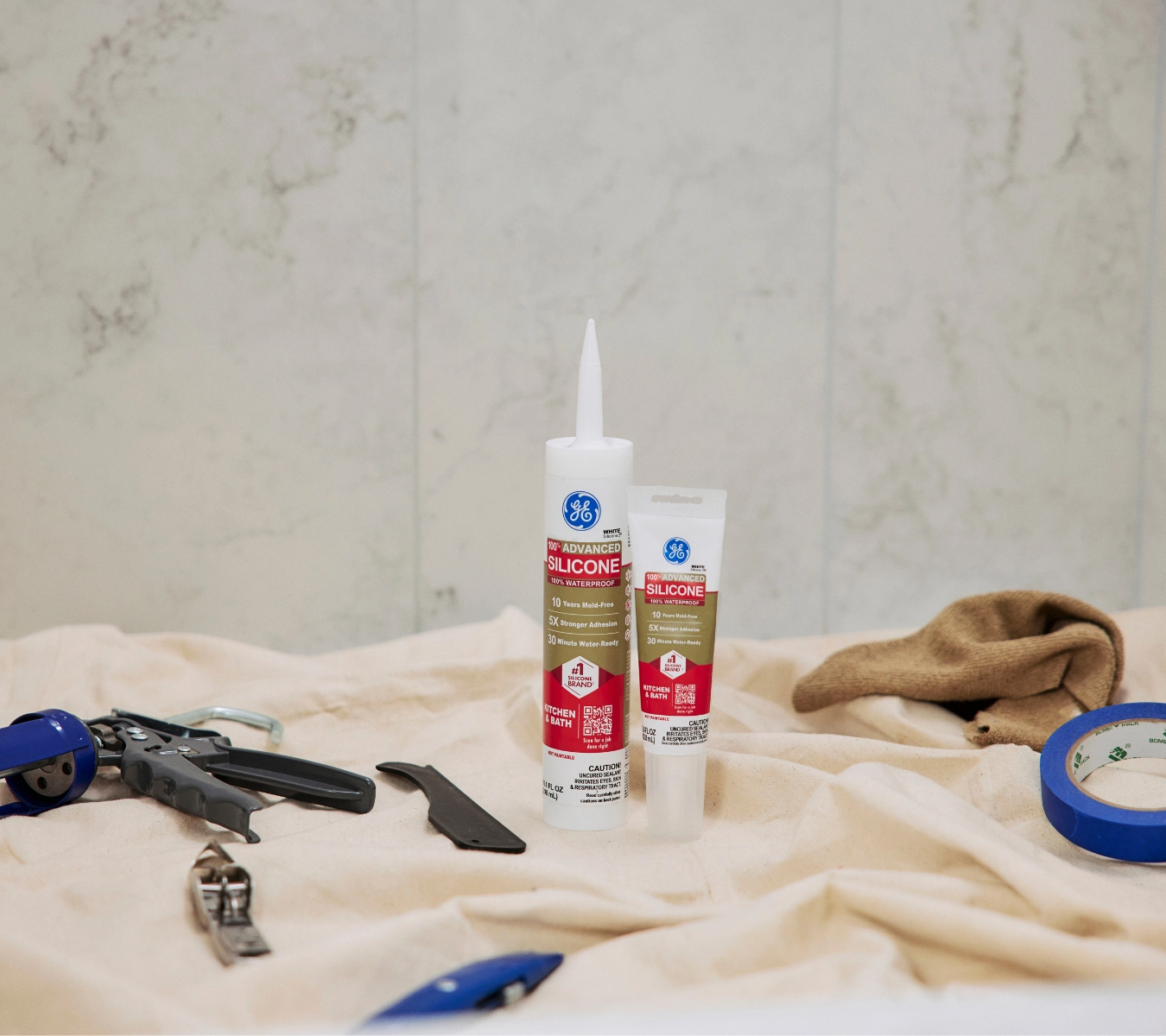
A photo of GE Advanced Silicone Kitchen & Bath. Look for sealants that become water-ready quickly but still allow enough working time for precision. Products like GE Advanced Silicone Kitchen & Bath are water-ready in as little as 30 minutes while maintaining flexibility for positioning and smoothing. Always check the label for cure times specific to your conditions, including humidity and temperature.
- Flexibility
Pipes, joints, and fixtures naturally expand and contract over time and if the sealant you use can’t move with them, cracks and leaks will eventually form. That’s why choosing a highly flexible sealant is essential for long-term performance.
Installing a drop sink? Learn what you need to know.
Silicone sealants are preferred for plumbing jobs because they maintain their flexibility even after curing. Unlike acrylic caulks, which can become brittle, silicone stays elastic and resists shrinking or splitting. This is especially important around sink rims, tub spouts, and supply lines where constant use puts stress on the seal. Look for products with high flexibility ratings like GE Supreme Silicone Kitchen & Bath Sealant, to ensure a reliable seal that won’t fail under pressure.
- Lifespan A long-lasting sealant reduces the risk of callbacks and gives your clients confidence in your work. High-performance plumbing sealants resist mold, mildew, and breakdown from constant water exposure. Silicone products offer excellent durability and are designed to last for years without cracking or shrinking. For tub and tile plumbing applications, GE Tub & Tile Silicone Sealant offers strong adhesion and 100% waterproof performance in high-moisture zones. It’s ideal for sealing vertical joints around bathtubs, shower enclosures, and ceramic surfaces where reliable mold-resistant protection is critical. Choosing a sealant with a proven lifespan means fewer repeat visits and stronger customer trust in the quality of your installations.
- Adhesion across materials
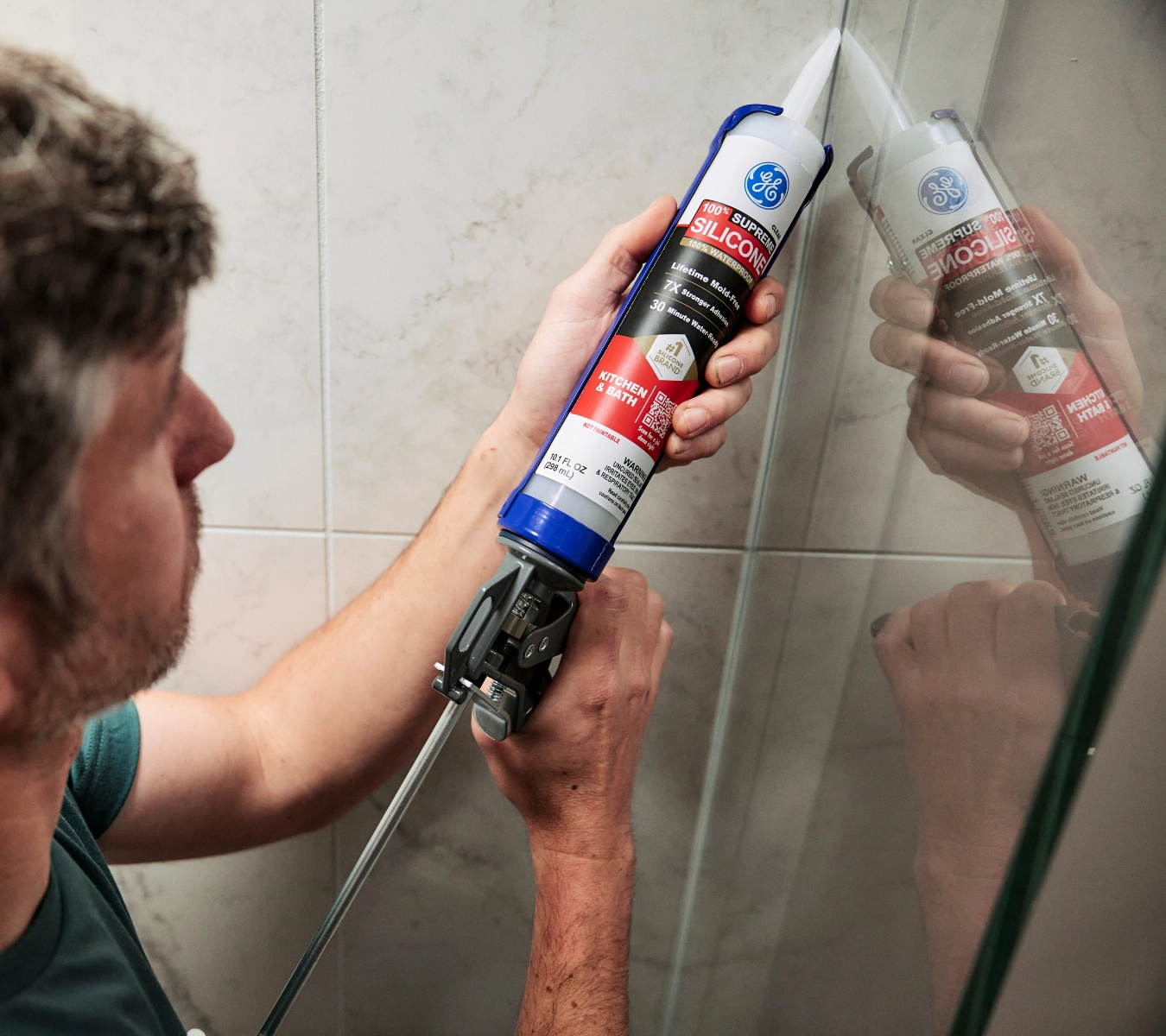
A photo of a bathroom seal between glass and tile surfaces. Plumbing jobs often involve sealing between dissimilar materials—like tile to metal, or PVC to glass. A reliable plumbing sealant should bond well across a wide range of surfaces to ensure leak protection and reduce the need for multiple products. Silicone sealants are especially effective in this regard, offering strong adhesion to common materials.
- Durability A high-quality sealant should remain stable in fluctuating temperatures and resist breakdown from cleaning products and moisture. Silicone sealants outperform acrylic caulks in this category, offering long-term waterproof protection and mold resistance. For plumbing work that needs to last, choose a product like GE Advanced Silicone Kitchen & Bath which is engineered to stay flexible, waterproof, and leak-free over time—even in demanding environments.
- Safety standards For plumbing projects involving potable water or enclosed spaces, safety and compliance are non-negotiable. Look for plumbing sealants that are low-odor, non-toxic, and labeled for use in food or water contact applications. Certifications such as NSF or ANSI indicate the product meets health and safety standards.
Benefits of using a high-quality silicone plumber sealant
Here’s why opting for top-notch silicone sealants is worth it for plumbers.
- Repeat business and customer satisfaction Creating reliable seals that hold up over time reduces callbacks, minimizes warranty issues, and reinforces your professionalism. When customers see that your work stays clean, intact, and mold-free, they’re more likely to call you again and recommend your services to others. Repeat business often comes down to small details, and sealant performance is one of them. Choosing a trusted product shows clients you care about doing the job right the first time.
- Higher quality finishes A quality silicone plumbing sealant delivers a cleaner, more professional finish that reflects well on your work. It applies smoothly, adheres evenly, and resists shrinking or cracking over time. This results in crisp, finished lines around fixtures, sinks, and fittings—no gaps, bubbles, or discoloration. Products like GE Supreme Silicone Kitchen & Bath Sealant are designed for precision and long-term visual appeal, helping your installations look as good as they perform.
- Easier application Professional-grade silicone sealants are designed with ease of use in mind. They dispense smoothly, tool easily—particularly with GE’s new sealant Smoothing Tool—and offer consistent flow, even in tight or awkward spaces. Features like low odor and easy cleanup also make the job faster and more comfortable—especially for indoor projects. Overall, the easier the sealant is to apply, the more efficient and precise your installation will be.

